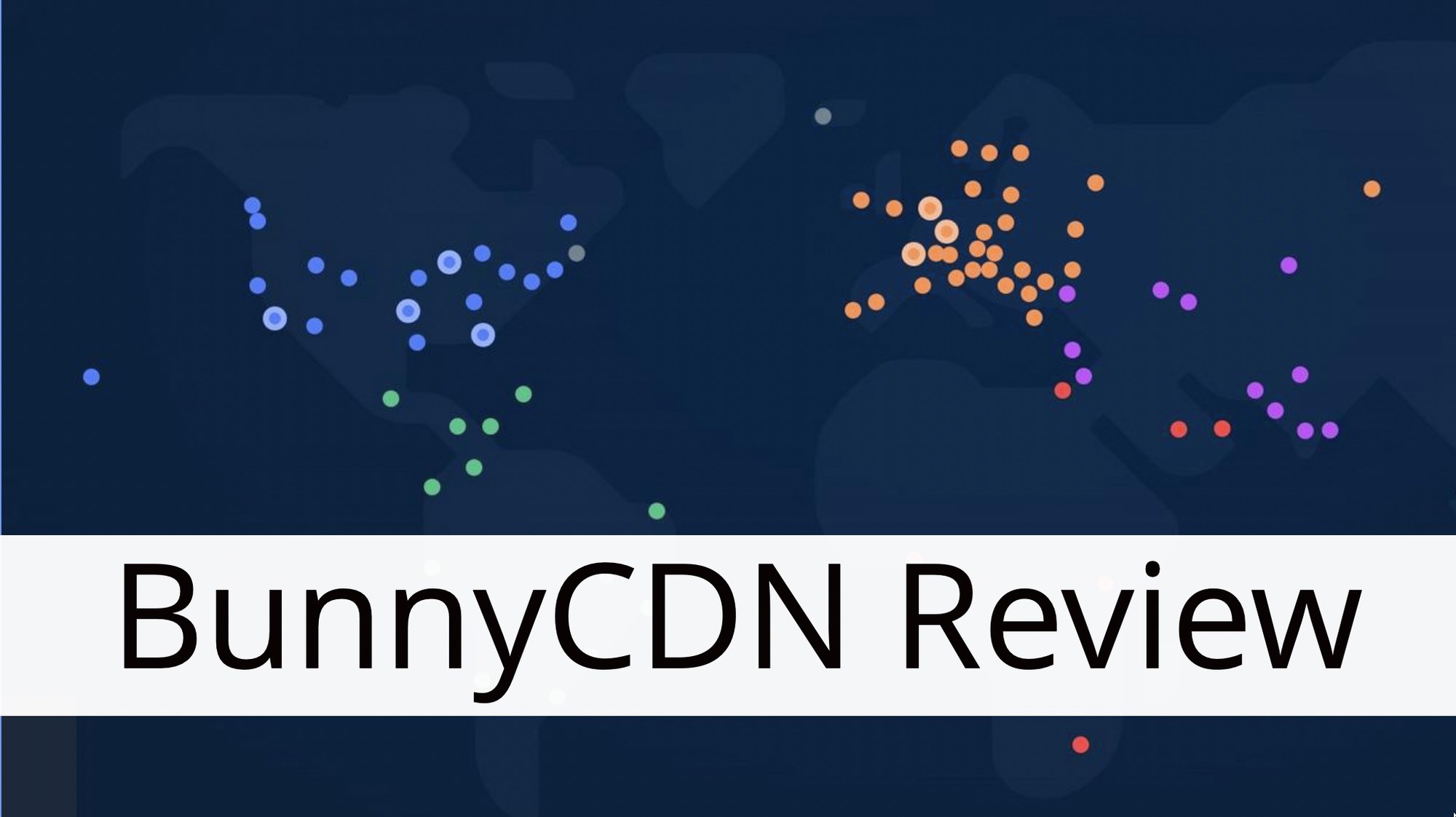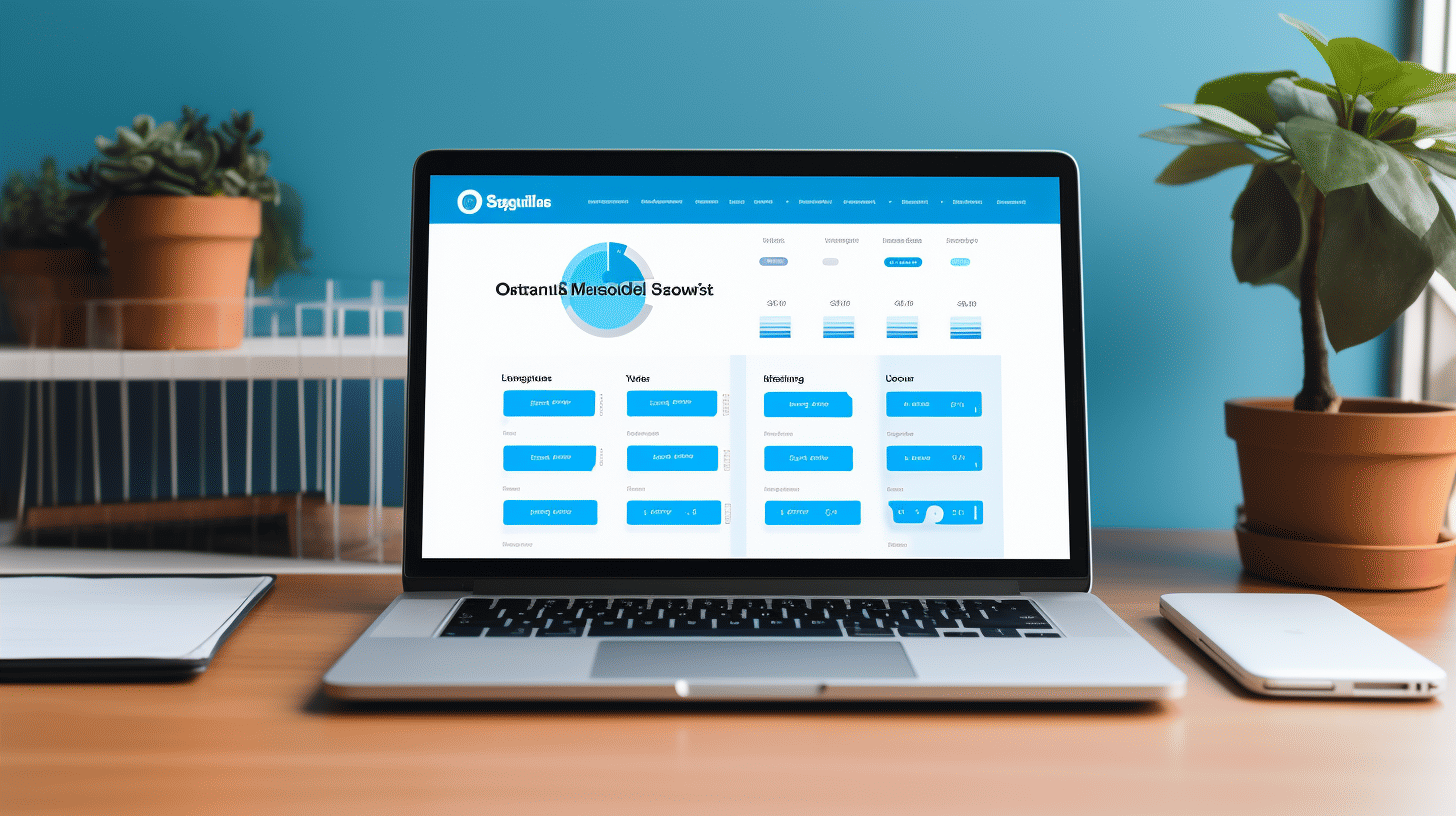In today’s digital age, having a strong online presence is no longer just an option, but a necessity for small businesses. A well-designed website can serve as a powerful tool to attract and engage customers, showcase products or services, and ultimately drive growth. With the multitude of website-building platforms available, WordPress has become the go-to choice for small business owners looking to establish their online presence.
🌟 Why WordPress? 🌟
WordPress is a versatile and user-friendly content management system (CMS) that empowers business owners to create and maintain their websites without the need for extensive coding skills. Its intuitive interface and extensive library of themes and plugins make it an ideal choice for small businesses, enabling them to create professional and visually appealing websites that represent their brand effectively.
Whether you’re a solopreneur, a local service provider, or an e-commerce business, WordPress offers a scalable and flexible platform that can cater to your specific needs. With its robust features and extensive customization options, you can create a website that not only looks great but also functions smoothly and delivers a seamless user experience.
But simply having a website is not enough. To truly stand out and succeed in the competitive online marketplace, small businesses need to go beyond just creating a website. They must focus on enhancing user engagement, optimizing their website for search engines, and taking appropriate measures to maintain its security and performance.
Throughout this article, we will explore the importance of online presence for small businesses and provide valuable tips and insights to help you create, optimize, and maintain a professional WordPress website. Whether you’re just starting out or looking to revamp your existing online presence, this article will serve as a comprehensive guide to help you navigate the world of WordPress and take your small business to new heights.
So, let’s dive in and unlock the power of WordPress for your small business!
Importance of Online Presence for Small Businesses
In today’s digital age, establishing a strong online presence is crucial for the success of small businesses. With an increasing number of consumers turning to the internet to research and purchase products or services, having a robust online presence can provide small businesses with a competitive advantage and open doors to new opportunities.
Competitive Advantage
According to recent statistics, 73% of small businesses already have a website[1]. These businesses understand the importance of showcasing their products or services online to reach a wider audience. In contrast, 28% of small businesses in the US do not have a website[2]. This group of businesses is missing out on a significant opportunity to connect with potential customers and establish brand credibility.
Having a website allows small businesses to:
- Reach a wider audience: A website serves as a virtual storefront that is accessible to anyone with an internet connection. It enables small businesses to extend their reach beyond their local vicinity and tap into a global market.
- Build brand credibility: A professional website creates a strong first impression and instills trust in potential customers. It allows businesses to showcase their expertise, testimonials, and portfolio, thus establishing credibility in the eyes of consumers.
- Enhance customer engagement: A well-designed website provides a platform for customers to interact with businesses, ask questions, and make inquiries. It allows for better customer service and personalized experiences, ultimately leading to higher customer satisfaction and loyalty.
Growing Market for Website Services
As the demand for online presence continues to rise, the market for website services has experienced significant growth. Small businesses now have a wide range of options when it comes to creating and managing websites. Platforms like WordPress have emerged as popular choices due to their user-friendly interfaces and extensive customization options.
To establish a successful online presence, small businesses can leverage the power of WordPress to:
- Create visually appealing websites: WordPress offers a vast collection of themes and templates that allow businesses to create stunning, professional-looking websites without any coding knowledge.
- Optimize for search engines: WordPress provides built-in SEO tools and plugins that help businesses optimize their websites for search engines. This ensures that their websites rank higher in search results, increasing visibility and driving organic traffic.
- Integrate e-commerce functionalities: With the growing popularity of online shopping, it is essential for small businesses to embrace e-commerce. WordPress offers various plugins and integrations that enable businesses to set up online stores and accept payments seamlessly.
The Need for More E-commerce Adoption
While having a website is vital, small businesses should also embrace e-commerce to stay competitive in today’s market. The COVID-19 pandemic has accelerated the shift towards online shopping, making it imperative for businesses to adapt and meet evolving consumer demands.
Statistics reveal that 44% of businesses without a website plan to create one in 2021[3]. This highlights the growing awareness among small businesses of the need to establish an online presence. Additionally, 83% of small businesses with a website believe they have a competitive advantage over those without one[4]. These businesses understand that e-commerce adoption is key to survival and growth in the modern marketplace.
By incorporating e-commerce functionalities into their websites, small businesses can:
- Expand their customer base: E-commerce enables businesses to sell to customers beyond their physical location, thereby reaching a larger pool of potential buyers.
- Increase revenue: Online sales have the potential to generate significant revenue streams for businesses. By eliminating geographic limitations and operating 24/7, e-commerce allows businesses to generate sales even when their physical stores are closed.
- Offer convenience to customers: The convenience of online shopping, with features like easy navigation, product comparison, and secure payment options, enhances the overall customer experience. This, in turn, leads to increased customer satisfaction and repeat business.
In conclusion, having a strong online presence is essential for small businesses to thrive in today’s competitive landscape. By embracing website and e-commerce technologies, businesses can reach a wider audience, establish credibility, and tap into new revenue streams. With platforms like WordPress, creating a successful online presence has become more accessible and achievable for small businesses.
Creating a WordPress Website for Small Business
Welcome to the world of WordPress! If you’re a small business owner looking to establish a strong online presence, you’ve come to the right place. With WordPress, you can easily create a professional and captivating website without the need for extensive coding knowledge. In this article, we will guide you through the process of setting up your very own WordPress website for your small business.
Understanding WordPress
Before diving into the exciting world of website creation, it’s important to have a basic understanding of what WordPress is and how it works. WordPress is a popular content management system (CMS) that allows users to build and manage websites with ease. It powers over 40% of all websites on the internet, making it the go-to platform for businesses of all sizes.
To get started, head over to our Understanding WordPress guide to familiarize yourself with the core concepts and features of WordPress. This will help you navigate through the rest of the article with confidence and make the most of the WordPress platform.
Choosing a Theme
Once you have a solid understanding of WordPress, it’s time to choose a theme for your small business website. A theme determines the overall look and feel of your site, so it’s important to select one that aligns with your brand and business goals. Here are a few tips to keep in mind when choosing a theme:
- Responsive Design: Choose a theme that is responsive, meaning it adapts to different screen sizes and looks great on both desktop and mobile devices. This is crucial for providing a positive user experience to your website visitors.
- Customization Options: Look for a theme that offers a variety of customization options, such as color schemes, layout options, and font choices. This will allow you to tailor your website to match your branding and make it truly unique.
- User Reviews: Take a look at the reviews and ratings of the theme you’re interested in. This will give you an idea of its quality and reliability, helping you make an informed decision.
Customization
Once you’ve selected a theme, it’s time to customize it to fit your small business’s branding and style. The customization process may vary depending on the theme you chose, but here are a few common customization options you should be aware of:
- Logo: Upload your business logo to give your website a professional touch. Most themes allow you to easily add and position your logo within the header area.
- Color Scheme: Customize the colors of your website to match your branding. This can usually be done through a simple color picker tool in the WordPress customizer.
- Fonts: Choose fonts that reflect your brand’s personality and make your content easy to read. Many themes offer a wide range of font options to choose from.
Adding Essential Business Info
Next, it’s time to add essential business information to your website. This includes contact details, business hours, and a brief description of your products or services. Here’s a checklist of the key elements you should include:
- Contact Information: Display your business’s phone number, email address, and physical address prominently on your website. This makes it easy for potential customers to get in touch with you.
- About Us: Craft a compelling “About Us” page that tells the story of your business, its mission, and values. This helps establish trust and a personal connection with your audience.
- Services/Products: Create dedicated pages to showcase your products or services. Provide detailed descriptions and high-quality images to entice potential customers.
Creating a Captivating Homepage
Your homepage is often the first impression visitors have of your website, so it’s important to make it captivating and engaging. Here are a few tips to create a homepage that grabs attention:
- Clear and Concise Message: Communicate your business’s unique selling proposition (USP) clearly and concisely on the homepage. Use compelling copy and visuals to capture the interest of your visitors.
- Call-to-Action Buttons: Include prominent call-to-action buttons that encourage visitors to take the desired action, such as “Contact Us” or “Shop Now.”
- Testimonials/Reviews: Showcase positive testimonials or reviews from happy customers to build trust and credibility.
Installing Necessary Plugins
Lastly, it’s time to enhance the functionality of your small business website by installing necessary plugins. Plugins are like apps that can extend the features and capabilities of your WordPress site. Here are a few essential plugins every small business website should consider:
- Contact Form Plugin: Install a contact form plugin to make it easy for visitors to get in touch with you. Popular options include Contact Form 7 and WPForms.
- SEO Plugin: Boost your website’s visibility in search engines by installing an SEO plugin like Yoast SEO or Rank Math. These plugins offer valuable features to optimize your content for search engines.
- Security Plugin: Protect your website from cyber threats by installing a security plugin like Wordfence or Sucuri. These plugins help prevent hacking attempts and keep your site secure.
In conclusion, creating a WordPress website for your small business is an exciting endeavor that opens up a world of possibilities. By following the steps outlined in this article, you’ll be well on your way to establishing a professional online presence that attracts customers and drives business growth. So, let’s dive in and start building your WordPress website today! 🚀
Enhancing User Engagement with CTAs
Did you know that 70% of small businesses do not have a CTA (Call to Action) on their website homepage? It’s a surprising statistic considering how crucial CTAs are for driving user engagement and conversions. CTAs are the prompts that encourage visitors to take a specific action on your website, such as signing up for a newsletter, making a purchase, or downloading a free resource.
But why are CTAs so important? Well, they serve as a guide for your visitors, directing them toward the next step in their journey on your website. Without a clear CTA, visitors may feel lost or unsure about what action to take. A well-placed and compelling CTA can make a significant impact on your website’s user engagement metrics, such as click-through rates, conversion rates, and overall user satisfaction.
Here are a few reasons why incorporating effective CTAs is essential for enhancing user engagement on your website:
- Clear Direction: A CTA provides clear direction to your visitors, guiding them towards the desired action. It eliminates confusion and helps users understand what they need to do next.
- Increased Conversions: Well-designed CTAs are powerful tools for increasing conversions on your website. When strategically placed and worded, they can entice users to take action and complete a desired goal, such as making a purchase or filling out a contact form.
- Improved User Experience: A user-friendly website is engaging and enjoyable to navigate. CTAs play a crucial role in improving user experience by making it easier for visitors to find the information or perform the tasks they came to your site for.
- Boosted Click-Through Rates: Compelling CTAs can significantly impact your click-through rates. When users are motivated by a strong CTA, they are more likely to click on the desired link and explore your website further.
- Capture Valuable Data: CTAs can be used to collect valuable data from your users, such as email addresses for newsletter subscriptions or preferences for personalized recommendations. This data can be used to tailor future marketing efforts and improve user engagement.
To effectively incorporate CTAs into your website and enhance user engagement, consider the following tips:
- Use action-oriented language that encourages immediate action, such as “Sign up now” or “Get started today.”
- Make your CTAs visually appealing with contrasting colors and attention-grabbing design elements.
- Place your CTAs strategically, ensuring they are easily visible and accessible to your visitors.
- Test different variations of your CTAs to see which ones perform best and optimize accordingly.
By implementing effective CTAs on your website, you can create a more engaging user experience and drive higher conversions. Don’t miss out on the opportunity to guide your visitors towards action and achieve your business goals. Start improving user engagement today!
Enhancing user engagement with CTAs.
Website Optimization
In today’s digital age, having a well-optimized website is crucial for success. Website optimization involves improving various aspects of a website to enhance its performance, visibility, and user experience. From speed and performance to SEO and mobile optimization, there are several key considerations to keep in mind when optimizing your website.
Speed and Performance
Website speed and performance play a significant role in user satisfaction and overall success. A slow-loading website can lead to a high bounce rate and deter visitors from exploring further. Here are some essential factors to focus on when optimizing the speed and performance of your website:
- Page load time: Aim for quick loading times to keep visitors engaged. Studies have shown that 40% of visitors will abandon a website if it takes more than 3 seconds to load.
- Caching: Utilize caching techniques to store frequently accessed website data, reducing load times for returning visitors.
- Image optimization: Compress images without compromising quality to reduce their file size and improve load times.
- Minify code: Minifying JavaScript, CSS, and HTML files can streamline your website’s code and decrease load times.
Improving your website’s speed and performance not only benefits users but also positively impacts your search engine rankings. Search engines like Google prioritize fast-loading websites, rewarding them with higher visibility in search results.
SEO (Search Engine Optimization)
SEO is a fundamental component of website optimization. It involves optimizing your website’s content, structure, and other elements to rank higher in search engine results pages (SERPs). Here are some key SEO strategies to consider:
- Keyword research: Identify relevant keywords and phrases that people are using to search for products or services similar to yours. Incorporate these keywords strategically into your website’s content.
- Meta tags: Craft compelling meta titles and descriptions that accurately describe the content on each page of your website. Meta tags act as a preview in search results and can influence click-through rates.
- Quality content: Create high-quality, informative, and engaging content that caters to your target audience’s interests and needs. By offering valuable content, you can attract more visitors and encourage them to stay on your website.
- Backlinks: Earn backlinks from reputable websites, as they are a signal of trust and authority. Building a strong backlink profile can improve your website’s credibility and visibility in search results.
Mobile Optimization
With the majority of internet users accessing websites from their mobile devices, optimizing your website for mobile is no longer an option; it’s a necessity. Here are some essential considerations for mobile optimization:
- Responsive design: Ensure your website is responsive, meaning it adapts to different screen sizes and resolutions. This ensures a seamless experience for mobile users.
- Mobile-friendly content: Create content that is easy to read and navigate on mobile devices. Use a legible font size and avoid using pop-ups or interstitials that can obstruct the user’s view.
- Page speed: Mobile users expect fast-loading websites. Optimize your website for speed on mobile devices to provide a smooth browsing experience.
Did you know that 85% of adults believe that a company’s mobile website should be as good as or better than its desktop website? Don’t overlook the importance of mobile optimization in today’s mobile-first world.
Optimizing your website is an ongoing process that requires regular updates and maintenance. By implementing the right strategies for speed and performance, SEO, and mobile optimization, you can create a website that not only attracts visitors but also keeps them engaged and satisfied.
Learn more about mastering website performance to take your website optimization game to the next level.
Maintaining Your WordPress Website
👋 Welcome to the world of WordPress website maintenance! In this article, we’ll explore three crucial aspects that will help you keep your WordPress website running smoothly: Regular Updates, Security Measures, and Backups. Whether you’re a seasoned WordPress user or just starting out, these maintenance tasks are essential for the overall health and performance of your website.
Regular Updates
Keeping your WordPress website and its components up to date is vital for several reasons. Updates not only provide you with the latest features and enhancements but also improve the security and stability of your site. Here are a few key areas to focus on when it comes to regular updates:
- WordPress Core Updates: Regularly check for and install updates to the WordPress core software itself. These updates often include bug fixes, performance improvements, and security patches.
- Theme Updates: If you’re using a WordPress theme, make sure to update it regularly. Theme updates often address bugs, compatibility issues, and even introduce new features to enhance the design and functionality of your website.
- Plugin Updates: Plugins play a crucial role in extending the functionality of your WordPress site. Always keep an eye out for plugin updates and install them promptly. Plugin updates not only add new features but also fix any issues or vulnerabilities that may have been discovered.
Remember to take a backup of your website before performing any updates, as a precautionary measure in case something goes wrong during the update process.
Security Measures
Keeping your WordPress website secure should be a top priority. With the increasing number of cyber threats and attacks, it’s essential to implement necessary security measures to protect your website and its valuable data. Here are some key security practices to consider:
- Strong Passwords: Ensure all user accounts on your WordPress site have strong, unique passwords. A strong password includes a mix of uppercase and lowercase letters, numbers, and symbols.
- Secure Hosting: Choose a reputable and secure hosting provider for your WordPress website. Look for providers that offer features like firewalls, malware scanning, and regular backups.
- SSL Certificate: Install an SSL certificate for your website to enable secure browsing and safeguard sensitive information such as login credentials and user data.
- Security Plugins: Consider using security plugins to enhance the security of your WordPress website. These plugins provide features like malware scanning, brute force protection, and firewall functionality.
Backups
Regular backups are like a safety net for your WordPress website. They ensure that even in the event of a data loss or catastrophic event, you have a recent and functional copy of your website to restore from. Here’s what you need to know about backups:
- Frequency: Set up regular backup schedules according to the frequency of your website updates. If you update your site frequently, consider daily or real-time backups.
- Offsite Storage: Store your backups in a secure offsite location, separate from your web server. This ensures that even if your server is compromised, your backups remain intact.
- Testing Restorations: Regularly test the restoration process from your backups to ensure they are functioning correctly. This practice helps you identify any issues with the backup files and ensure they are restorable when needed.
Remember, maintaining a WordPress website is an ongoing process. By implementing regular updates, security measures, and backups, you’re taking significant steps towards ensuring the longevity and success of your website.
To explore more essential services for WordPress website maintenance, check out Essential services for WordPress. Stay tuned for more tips and best practices for maintaining your WordPress website! 👍
Conclusion
In conclusion, creating and maintaining a professional WordPress website is essential for small business owners looking to establish a strong online presence. By leveraging the power of WordPress, businesses can customize their websites to reflect their brand identity, engage with users through captivating homepage designs and compelling call-to-actions (CTAs), and optimize their sites for speed, performance, and mobile devices.
To ensure a seamless website experience for visitors, it’s crucial to stay on top of regular updates, implement robust security measures, and create backups of your WordPress site. These steps will help mitigate the risk of security breaches and ensure that your website remains up-to-date with the latest features and security patches.
Managed-WP™, a premium managed WordPress cloud hosting platform, is equipped to support small business owners in these endeavors. With its simplified infrastructure, freedom in digital experiences, and expert problem-solving available 24/7/365, Managed-WP™ provides small businesses with the peace of mind and support they need to create and maintain a professional WordPress website.
Take the first step towards a powerful online presence by visiting Managed-WP.com and exploring the premium managed WordPress hosting options available. With Managed-WP™, you can focus on growing your business while leaving the technical aspects of website management in capable hands.
Frequently Asked Questions
- What are some tips for creating a professional WordPress website for small business owners?
Some tips for creating a professional WordPress website for small business owners include: choosing a clean and professional theme, customizing your website with branding elements, optimizing website speed and performance, adding high-quality images and content, integrating social media, and regularly updating and maintaining your website.
- How can WordPress help small businesses create a professional website?
WordPress offers a user-friendly interface, a wide range of customizable themes and plugins, and powerful SEO capabilities. It allows small business owners to create and manage their websites easily, showcase products and services professionally, and attract customers through online marketing strategies.
- Do I need any coding knowledge to create and maintain a WordPress website?
No, you don’t need coding knowledge to create and maintain a WordPress website. WordPress provides a visual editor and drag-and-drop functionality that makes it easy for beginners to customize their websites. However, having basic coding knowledge can be helpful for more advanced customizations.
- How can I optimize my WordPress website for better search engine rankings?
To optimize your WordPress website for better search engine rankings, you can use SEO plugins like Yoast SEO or Rank Math, optimize your content with relevant keywords, create descriptive meta tags and titles, add XML sitemaps, improve website speed, and build high-quality backlinks.
- Why is it important to regularly update and maintain my WordPress website?
Regularly updating and maintaining your WordPress website is important for security, performance, and functionality reasons. Updates ensure that your website is protected against vulnerabilities, plugins and themes are compatible, and your website runs smoothly to provide a positive user experience.



















